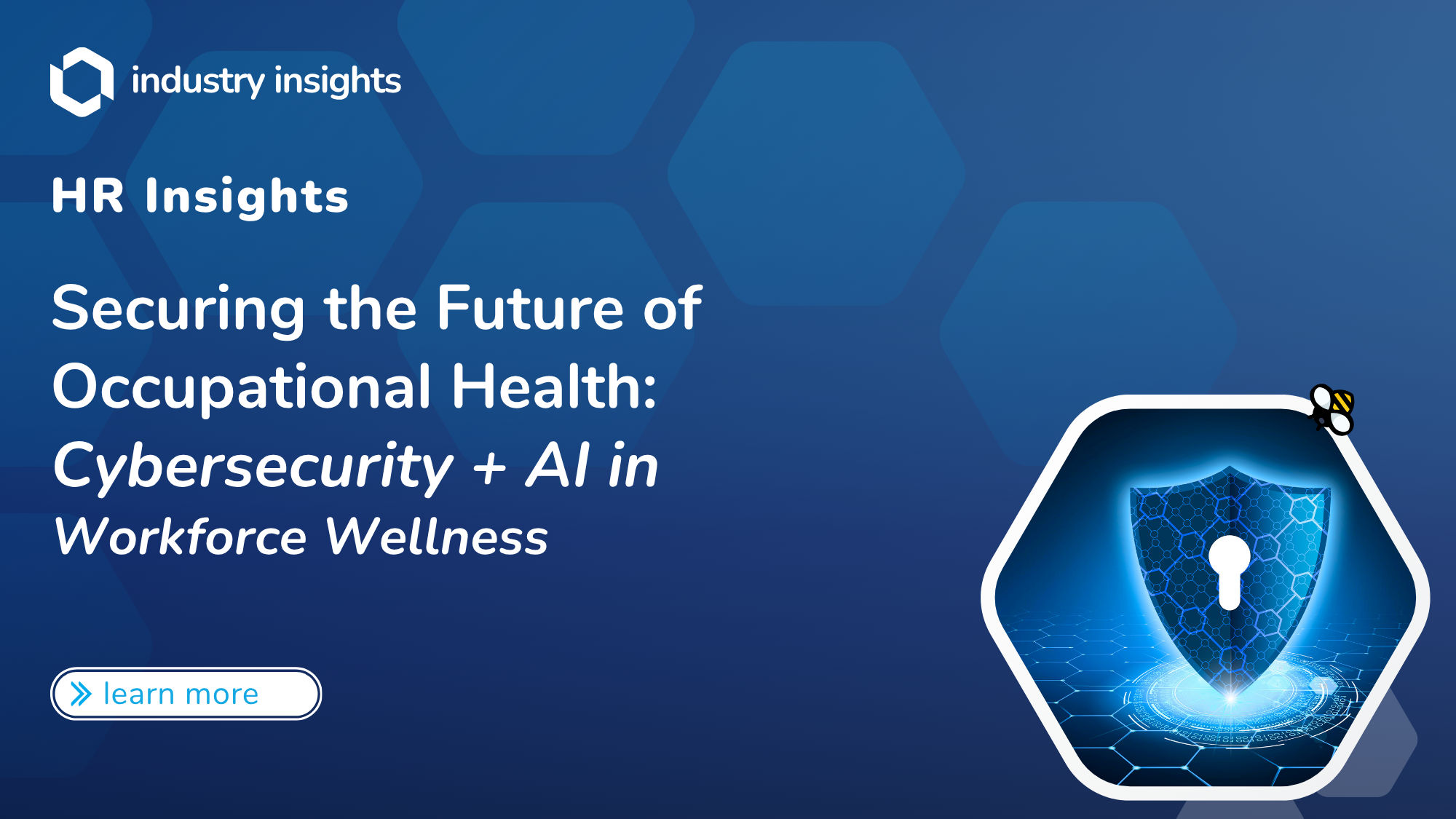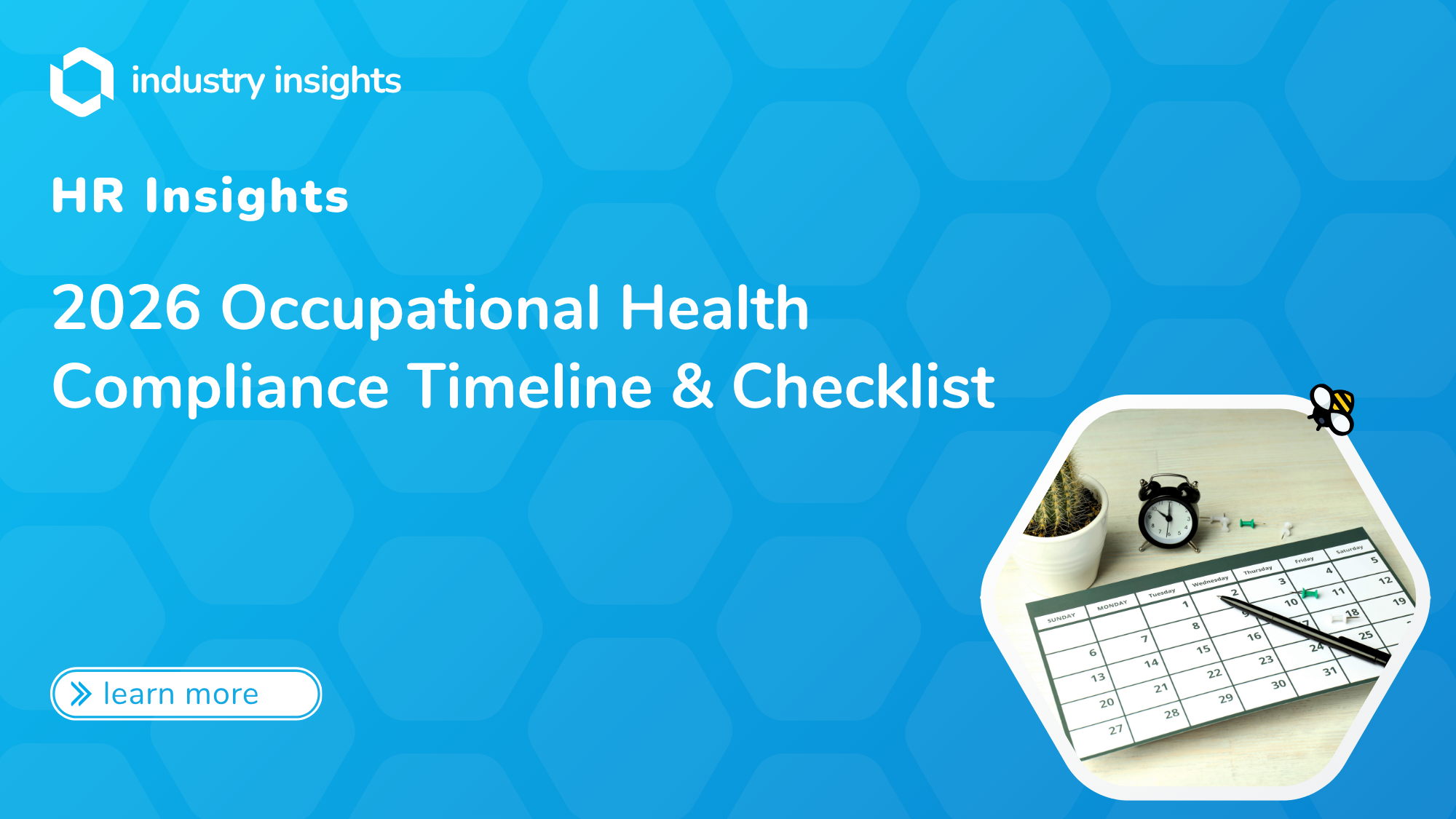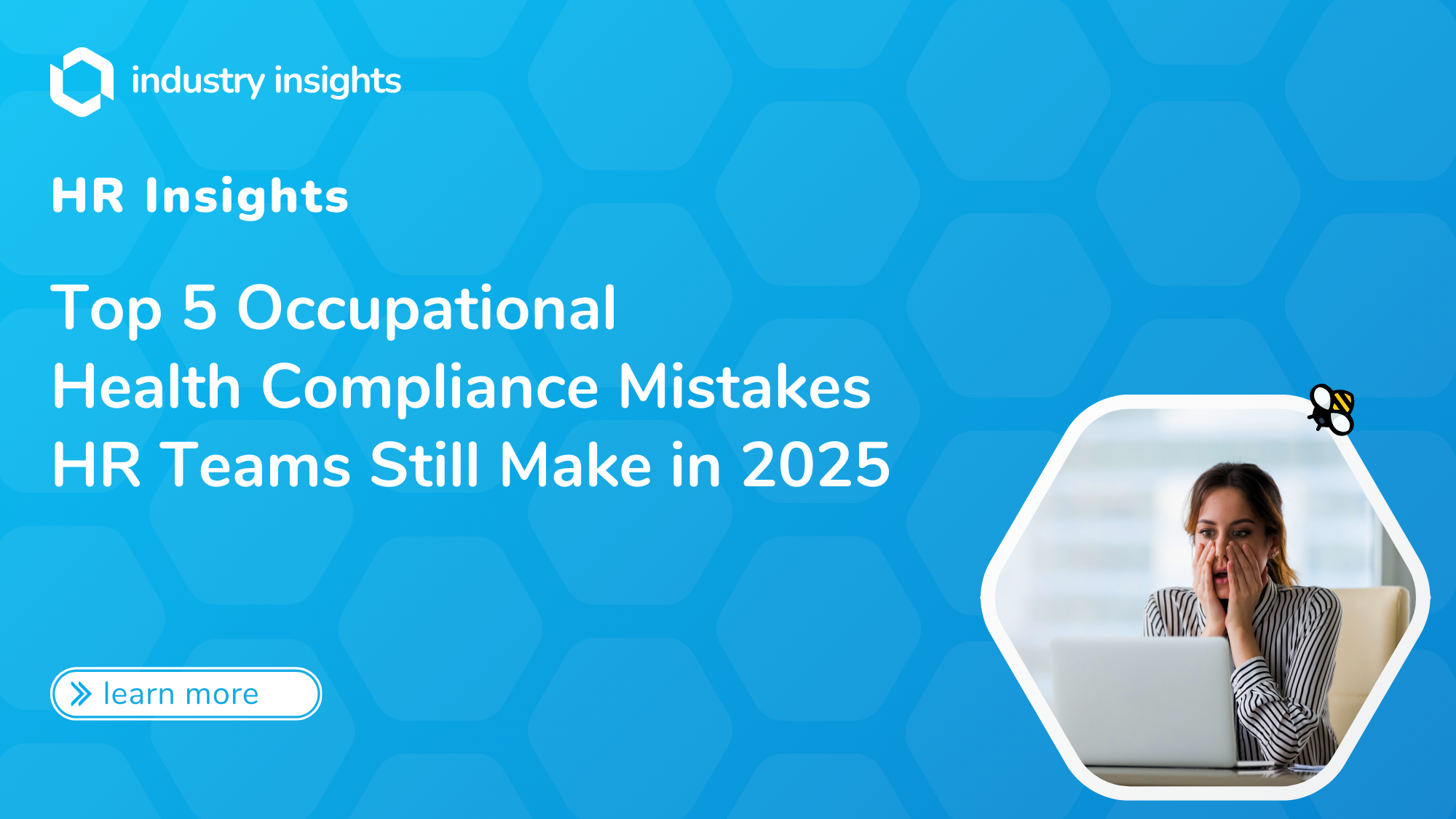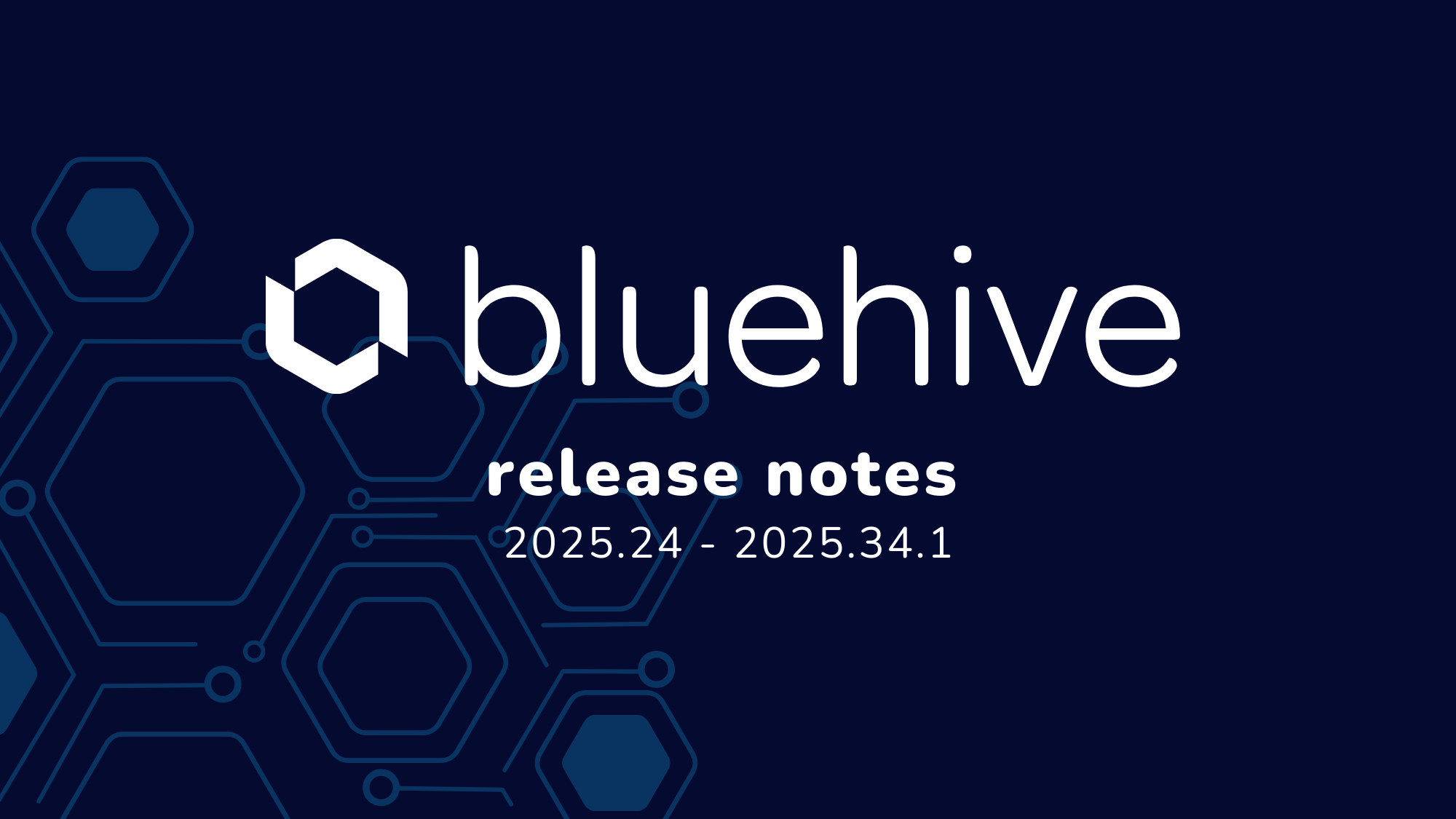In an era when data is a core asset, occupational health management platforms bridge HR, clinical care, compliance, and employee wellness. This tight coupling of sensitive personal health data, behavioral insights, and AI-driven analytics also makes them a high-value target for cyberattacks.
This whitepaper examines:
- The evolving cybersecurity threat landscape in healthcare and occupational health
- How AI adoption introduces new risks
- Core security and governance principles
- Best practices for HR, employers, and health providers
- A roadmap and recommendations for proactive adoption
Download the Whitepaper
October’s Cybersecurity Awareness Month is more than a symbolic reminder. For organizations managing employee health, screening, immunizations, physicals, mental health, and data flows across multiple systems, it’s a call to embed security deeply – not as a checkbox, but as a value.
Occupational health systems are no longer isolated: they span cloud computing, mobile access, APIs, telehealth, AI, third-party labs, biometric devices, and integration with HR/benefits systems. Each interface, each microservice, each data exchange is a potential attack vector. And when health, identity, and behavioral data are involved, the stakes are high: reputational damage, regulatory fines, and potential harm to individuals.
Therefore, cybersecurity must be a first-class design objective – not an add-on. This whitepaper shows how to build a resilient, trustworthy system while enabling innovation and user experience.
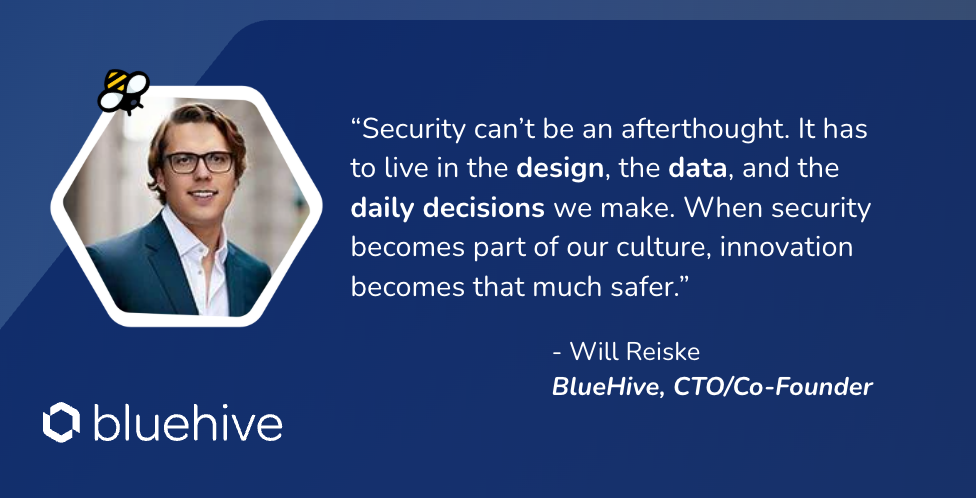
Threat Landscape in Healthcare & Occupational Health
Rising Breaches and Disruption
- In 2024, the U.S. reported 725 large healthcare data breaches (each involving 500+ records), exposing over 275 million records – a record high for breached data in a single year (The HIPAA Journal, 2025).
- While the overall number of large breaches dipped slightly from 2023, the volume of data exposed surged by ~ 64 %.
- In the first half of 2025 alone, 283 data breaches were reported – up ~20 % over the same period in 2024 (Becker’s Hospital Review, 2025).
- Healthcare data breach costs are high: average cost per record is ~$408 vs ~$148 cross-industry (Dialog Health, n.d.).
- Over 90 % of healthcare organizations reported at least one security breach in the past year.
- Phishing, hacking, and intrusion attacks dominate as the root cause; web application errors, misconfiguration, and system exploitation account for ~76 % of healthcare breaches.
These trends underscore that attacks are becoming more frequent, more sophisticated, and more damaging.
High-Risk Vectors in Occupational Health
While these general healthcare threats are real, occupational health systems have specific risk dimensions:
- Cross-domain data exchange: HR platforms, clinical systems, labs, pharmacies, wellness apps, screening vendors – each link is a possible vulnerability.
- Complex vendor ecosystem: Third parties (labs, diagnostic centers, device suppliers) often require access. A weak link in vendor’s security can undermine the entire chain.
- AI/ML model attacks: Emerging threats such as model inversion or membership inference allow attackers to reverse-engineer models to extract sensitive training data (OWASP, 2023).
- Device or sensor integration: Wearables, biometrics, on-site diagnostic tools may be exploited if firmware is weak or communication channels are unsecured.
- Insider risk / privilege misuse: Those with access to HR or health data (e.g. occupational health staff) may misuse privilege, intentionally or accidentally.
- Regulatory complexity & overlapping compliance demands: HIPAA, state laws, OSHA rules, and occupational health jurisdictions can make error margins small.
- Legacy components & technical debt: Some systems or data silos may lack modern protection (e.g. unpatched servers, outdated libraries).
Impacts Beyond Data
- Patient / employee safety disruption: If systems are compromised or offline, scheduling, monitoring, or clinical workflows can be delayed or disabled.
- Regulatory and financial penalties: HIPAA violations, breach notification costs, class actions, audit fines.
- Trust & reputational damage: Loss of confidence among employees, providers, and clients.
- Operational downtime: System recovery, forensic investigation, legal responses, and rebuilding.
- Cascading risks: Data used in multiple systems may be re-used for identity theft, fraud, or further attack escalation.
One Stark Example:
The Change Healthcare / UnitedHealth breach, estimated to have impacted approximately 190–192.7 million individuals, involved health insurance and medical data, billing, diagnoses, and more – a watershed moment in healthcare cybersecurity (Reuters, 2025).
Core Principles for Secure Occupational Health Platforms
Confidentiality, Integrity, Availability (CIA Triad)
- Confidentiality: Ensure only those with legitimate, minimal access can read or query data.
- Integrity: Prevent unauthorized or undetected modification of records or analytics.
- Availability: Systems must remain resilient, able to handle attacks and recover quickly.
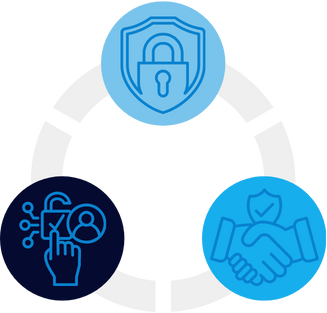
Zero-Trust and Least Privilege
- Adopt zero-trust architecture: treat every request – internal or external – as untrusted until verified.
- Enforce least privilege: give users or systems only the minimum rights needed to perform tasks.
- Periodically review access rights and revoke inactive or unnecessary permissions.
Strong Encryption and Data Protection
- Encrypt data both at rest and in transit using industry-recognized standards (AES-256, TLS 1.3+).
- Use tokenization or pseudonymization to separate identifiers from sensitive payloads.
- Deploy robust key management, including rotation and use of hardware security modules (HSMs).
Identity Management & Authentication
- Enforce multi-factor authentication (MFA) for all users, especially privileged accounts.
- Use centralized identity providers (IDaaS) or federated identity systems for scalability and uniform control.
- Monitor login patterns, geolocation anomalies, and anomalous usage behavior.
Audit Logging, Monitoring & Detection
- Maintain immutable logs for data access, configuration changes, system events.
- Use Security Information and Event Management (SIEM) tools to correlate events and detect anomalies.
- Real-time alerts for large exports, uncharacteristic access, or unusual sequences.
Network Segmentation and Secure Architect
- Isolate critical systems (e.g. databases, AI modules, PII stores) from external interfaces.
- Use API gateways, firewalls, intrusion detection/prevention systems (IDS/IPS).
- Employ microsegmentation to limit lateral movement within networks.
Incident Response and Business Continuity
- Adopt zero-trust architecture: treat every request – internal or external – as untrusted until verified.
- Enforce least privilege: give users or systems only the minimum rights needed to perform tasks.
- Periodically review access rights and revoke inactive or unnecessary permissions.
Integrating AI:Opportunities and Risks
Opportunities
- Predictive modeling: Early identification of workforce health risks (e.g. injury, chronic disease progression).
- Anomaly detection: Spot unusual patterns or possible fraud in screening workflows.
- Operational efficiency: Automate routine classification or decision tasks, freeing human oversight for exceptions.
AI-Specific Threats
- Model inversion / membership inference: Attackers may exploit model outputs to recover sensitive training data (Hogan Lovells, 2024).
- Data poisoning / adversarial attacks: Malicious inputs may corrupt models or degrade performance (Cyber Defense Magazine, 2024).
- Overfitting / leakage: Models that memorize rather than generalize are more vulnerable to data extraction.
- Unauthorized API probing: Attackers may systematically probe model endpoints to reconstruct sensitive patterns.
Mitigation and Secure AI Practices
- Access control to model APIs: Only authenticated, rate-limited, and permissioned access to prediction endpoints.
- Input and output filtering / sanitization: Validate or throttle inputs to reduce malicious probing.
- Noise injection / differential privacy: Introduce calibrated randomness in outputs to mask individual data contributions.
- Model ensembling / dropout / data partitioning: Use architecture techniques to reduce correlation-based extraction (All Things on Security, 2024).
- Regular retraining / rotation: Periodically refresh models with new data and deprecate older versions.
- Model monitoring and anomaly detection: Watch for abnormal querying patterns or suspicious usage.
- Adversarial robustness / defense training with privacy in mind: Avoid over-robustification that increases leakage risk.
- Audit and logging: Track model usage, queries, and output patterns tied to users.
By combining strong access governance, statistical defenses, and monitoring, an AI module can remain secure while powering valuable insights.
Best Practices for HR / Health Providers / Employers
We’ve looked at some of the risks, now let’s take a look at some actionable practices that non-technical stakeholders can put in place to complement technical safeguards.
Governance and Policy
- Establish data governance committees including IT/security, legal, HR, and clinical staff.
- Define and document data classification, retention, and deletion policies.
- Enforce vendor security evaluation, SLAs, audits, and minimum baseline requirements.
- Align with compliance standards (HIPAA, HHS 405(d), NIST, HITRUST) and have periodic reviews.
Employee Training and Safety Culture
- Run regular phishing simulations, awareness campaigns, and role-based training.
- Promote clear reporting mechanisms for suspicious emails or behaviors.
- Incentivize secure behavior (e.g. reward “good catch” reporting).
- Integrate cybersecurity awareness into onboarding, not just an annual checkbox.
Vendor and Third-Party Risk Management
- Hold vendors to the same standards: require security questionnaires, attestations, audits, and compliance evidence.
- Limit vendor access via least privilege accounts and segregated environments.
- Conduct regular vulnerability scans and penetration testing of vendor integrations.
- Include termination and data removal clauses in contracts.
Incident Preparation & Simulation
- Run tabletop exercises simulating a data breach or ransomware incident.
- Predefine escalation paths, public relations messaging, and regulatory reporting workflows.
- Map out dependencies (e.g. cloud services, labs, imaging partners) to understand cascading impacts.
- Maintain crisis communication templates for employees, customers, regulators.
Metrics & Monitoring
Track KPIs such as:
- Number of phishing clicks / failed attempts
- Time to detect / respond (MTTD, MTTR)
- Access privilege audit compliance
- Number of vendor security findings
- Uptime / downtime metrics
- Model usage anomalies (for AI modules)
Scenario Illustrations
1.) Catching a Data Exfiltration Attempt
A large CSV export job was triggered unexpectedly at 2 AM, pulling detailed screening data for thousands of employees. The anomaly detection engine flagged this as a deviation from historical usage patterns. The SOC team immediately isolated the session, blocked the export, and traced the API calls to a compromised vendor account. The account was suspended, credentials reset, and investigation revealed the attacker had exploited a weak vendor credential. Early detection prevented data exfiltration.
2.) Preventing Model Inversion Attack
An external user repeatedly queried an AI health-risk prediction API at fine-grained levels, probing inputs systematically. The rate limiter and pattern detection flagged this sequence as suspicious. The system responded by requiring elevated authentication and applying output noise to reduce inference precision. The attack was blocked before sensitive model parameters or patient data could be reconstructed.
Recommendations & Roadmap
Phase 0: 0-3 Months
Focus Areas: Assessment and Governance
Key Deliverables: Security audit, gap analysis, steering committee, vendor inventory
Phase 1: 3-9 Months
Focus Areas: Core Hardening
Key Deliverables: MFA rollout, encryption enforcement, logging/monitoring stack, access reviews
Phase 3: 9-18 Months
Focus Areas: AI Hardening & Advanced Controls
Key Deliverables: Implement differential privacy, model monitoring, anomaly detection, adversarial defense
Phase 4: 18-36 Months
Focus Areas: Resilience & Maturity
Key Deliverables: Red teaming, IR simulations, business continuity, compliance frameworks & certifications
Turning Compliance into a Competitive Edge
Cybersecurity isn’t optional in occupational health; it’s foundational. As platforms handle both health and identity data, integrating AI and cross-system workflows, the risk surface is large, and the consequences severe. But with deliberate design, governance, and vigilance, organizations can turn risk into a competitive differentiator.
October’s Cybersecurity Awareness Month serves as a powerful reminder that digital safety is everyone’s responsibility. It’s not just about technology, it’s about culture. Every login, every data exchange, every system update represents a choice between vulnerability and vigilance. For HR leaders, healthcare providers, and employers, this month is the perfect opportunity to evaluate your security posture, refresh training, and strengthen your partnerships.
BlueHive’s mission is to make compliance, wellness, and security seamless. We view cybersecurity not as a barrier, but as an enabler of trust and efficiency. Whether you’re reexamining your data protection policies, preparing for a compliance audit, or simply looking to modernize your occupational health processes, BlueHive is here to help you build resilience that lasts long after Cybersecurity Month ends.
Sources
- HIPAA Journal. (2025, August 19). Healthcare Data Breach Statistics. https://www.hipaajournal.com/healthcare-data-breach-statistics/ The HIPAA Journal
- HIPAA Journal. (2025). 2024 Healthcare Data Breach Report. https://www.hipaajournal.com/2024-healthcare-data-breach-report/ The HIPAA Journal
- OWASP Foundation. (2023). ML03:2023 Model Inversion Attack. https://owasp.org/www-project-machine-learning-security-top-10/docs/ML03_2023-Model_Inversion_Attack OWASP
- Fortified Health Security. (2025). The state of cybersecurity in healthcare: 2024 Mid-Year Horizon Report. https://fortifiedhealthsecurity.com/wp-content/uploads/2025/01/2024-Mid-Year-Horizon-Report.pdf Fortified Health Security
- Microsoft Security. What is AI security? https://www.microsoft.com/en-in/security/business/security-101/what-is-ai-security Microsoft
- Cyber Defense Magazine. Securing AI Models: Risk and Best Practices. https://www.cyberdefensemagazine.com/securing-ai-models-risk-and-best-practices/ Cyber Defense Magazine
- Hogan Lovells. (2024, December). Model inversion and membership inference: Understanding new AI security risks and mitigating vulnerabilities. https://www.hoganlovells.com/en/publications/model-inversion-and-membership-inference-understanding-new-ai-security-risks-and-mitigating-vulnerabilities www.hoganlovells.com
- AllThingsOnSecurity. (n.d.). The Security of AI: Detecting and Mitigating Model Inversion Attacks. https://allthingsonsecurity.com/posts/the-security-of-ai-03-inversion-attacks/ allthingsonsecurity.com
- Astra Security. (2025). 80+ Healthcare Data Breach Statistics. https://www.getastra.com/blog/security-audit/healthcare-data-breach-statistics/ Astra Security
- TechRadar. Hackers leak medical reports after huge breach impacts 1.2 million patient records. https://www.techradar.com/pro/security/hackers-leak-medical-reports-after-huge-breach-impacts-1-2-million-patient-records TechRadar
- Reuters. Hack at UnitedHealth’s tech unit impacted 192.7 million people. https://www.reuters.com/business/hack-unitedhealths-tech-unit-impacted-1927-million-people-us-health-dept-website-2025-08-14/

